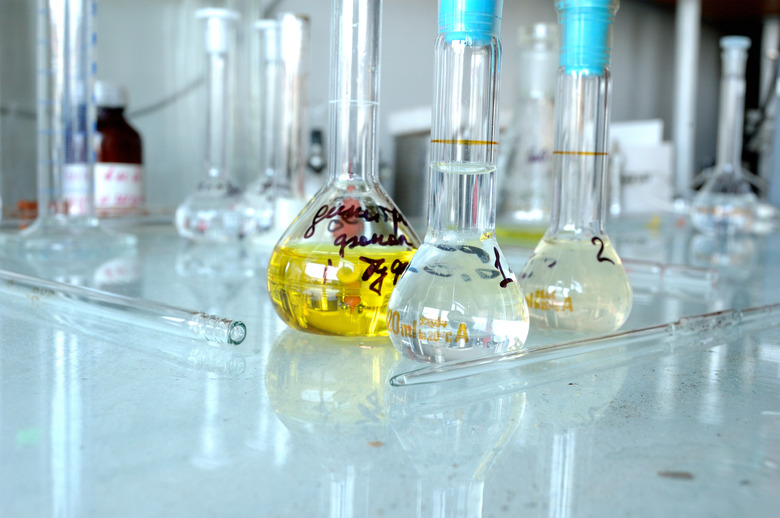What Is The Number Written To The Left Of The Chemical Symbol Or Formula Called?
The only time you'll see a number to the left of the formula for a chemical compound is when the compound is involved in a reaction, and you're looking at the equation for the reaction. When you see a number in this context, it's called a coefficient, and it's there to balance the equation. A balanced reaction equation is one that shows the same number of elements on both the reactant side and the product side, which is required by the law of conservation of mass. The little number you see to the right of the symbol for an element is called a subscript. That number indicates the number of atoms of that element present in the compound. When balancing an equation, you can change the coefficients but not the subscripts.
TL;DR (Too Long; Didn't Read)
The number in front of a chemical formula in a reaction equation is called the coefficient. It's there to balance the equation.
A Simple Example of Using Coefficients
A Simple Example of Using Coefficients
Consider one of the most basic reactions in nature: The combination of oxygen and hydrogen gas to form water. The unbalanced equation for the reaction is:
H2 (hydrogen gas) + O2 (oxygen gas) –> H20 (water)
A quick look at this equation shows two hydrogen atoms on both sides, which is good, but there is only one oxygen atom on the product side, and on the reactant side, there are two. You can fix this by placing a coefficient of 2 in front of the water molecule:
H2 + O2 –> 2H2O
but this unbalances the hydrogen atoms, so the final step is to add a coefficient of 2 in front of the H2 molecule on the reactant side;
**2H2 + O2 –> 2H2O**
Because of the added coefficients, there are now four hydrogens and two oxygens on both sides, and the equation is balanced.
Steps for Balancing Equations
Steps for Balancing Equations
You balance equations by adjusting coefficients, keeping in mind that the subscripts are part of the compound formulas and cannot be changed. Here's a typical strategy:
1. Identify the Most Complex Compound
Choose an element that appears in this compound and in a single reactant, if possible. Add a coefficient to balance the numbers of this element on both sides of the equation. The coefficient can be on the reactant or product side.
2. Balance Polyatomic Ions as a Unit
Add a coefficient to balance such ions as NO3- (nitrate) or CO32- (carbonate) without breaking them into component elements. For example, when you combine calcium with nitric acid, the products are hydrogen gas and calcium nitrate. The unbalanced equation is:
Ca + HNO3 –> H2 + Ca(NO3)2
There are two nitrate ions on the product side and only one on the reactants side. Fix that by adding a coefficient of 2 in front of the nitric acid on the reactant side. Doing so also makes the numbers of hydrogen on both sides equal. The balanced equation is thus:
Ca + 2HNO3 –> H2 + Ca(NO3)2
3. Balance the Rest of the Elements
You may still have to add coefficients to balance elements that aren't equal on both sides of the equations. Sometimes you have to add coefficients on both sides. For example, this is true to balance the number of oxygen atoms on both sides of the equation for the combustion of heptane:
C7H16 + 11 O2 → 7 CO2 + 8H2O
4. Double-Check
Count all the atoms of each element on both sides of the reaction to make sure the same. For reactions involving large molecules, it may help to make a table.
Cite This Article
MLA
Deziel, Chris. "What Is The Number Written To The Left Of The Chemical Symbol Or Formula Called?" sciencing.com, https://www.sciencing.com/number-written-left-chemical-symbol-formula-called-12997/. 10 May 2018.
APA
Deziel, Chris. (2018, May 10). What Is The Number Written To The Left Of The Chemical Symbol Or Formula Called?. sciencing.com. Retrieved from https://www.sciencing.com/number-written-left-chemical-symbol-formula-called-12997/
Chicago
Deziel, Chris. What Is The Number Written To The Left Of The Chemical Symbol Or Formula Called? last modified August 30, 2022. https://www.sciencing.com/number-written-left-chemical-symbol-formula-called-12997/
